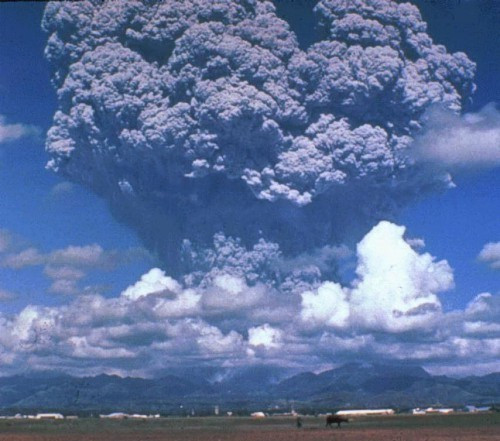Gigantic Volcanic Eruptions May have Wiped Out Pre-dinosaur Creatures, Say Scientists

Latest findings by scientists from Columbia University have suggested that a set of gigantic volcanic eruptions may have been responsible for the extinction of half of earth's species 200 million years ago.
The researchers say the eruptions may have resulted in sudden and extreme climate changes making it difficult for any kind of survival, reports ANI.
It was due to the extinction of such creatures that dinosaurs evolved and dominated the planet for the next 135 million years, before they too were wiped out too, the scientists said.
For the study, lead researcher Terrence Blackburn (then at MIT; now at the Carnegie Institution) calculated the exact dates from basalt, a rock left by eruptions, with the help of decayed uranium isotopes.
The geological deposits are dated at precisely 201,564,000 years ago, the scientists said, exactly the same time of a massive outpouring of lava.
"This may not quench all the questions about the exact mechanism of the extinction itself," Columbia geologist Paul Olsen said according to a report in UPI. "However, the coincidence in time with the volcanism is pretty much ironclad."
The basalts samples used in the study were all from the Central Atlantic Magmatic Province (CAMP), where a series of huge eruptions are known to have started around 200 million years ago, when there were no separate continents but all the land on earth was amassed into one huge continent.
"The eruptions spewed about 2.5 million cubic miles of lava in four sudden spurts over a 600,000-year span, and initiated a rift that evolved into the Atlantic Ocean; remnants of CAMP lavas are found now in North and South America, and North Africa," the report said.
The research by Blackburn and his colleagues further showed that the eruption in Morocco was the the first to take place, followed by the ones in Nova Scotia and New Jersey which took place about 3,000 and 13,000 years later, respectively.
The creatures that disappeared following the volcanic eruptions are eel-like fish called conodonts, early crocodilians, tree lizards and many broad-leaved plants among others. Further accuracy in the calculation of the dates by the scientists is added by a layer of sediment preceding the extinction containing mineral grains which provide evidence of one of earth's many periodic reversals of magnetic polarity.
"By correlating the precisely dated basalts with surrounding sedimentary layers, the new study shows that precession operated pretty much the same way then, allowing dates with a give or take of 20,000 years to be assigned to most sediments holding fossils," Co-author Paul Olsen, a geologist at Columbia University's Lamont-Doherty Earth Observatory said.
© Copyright IBTimes 2025. All rights reserved.





















